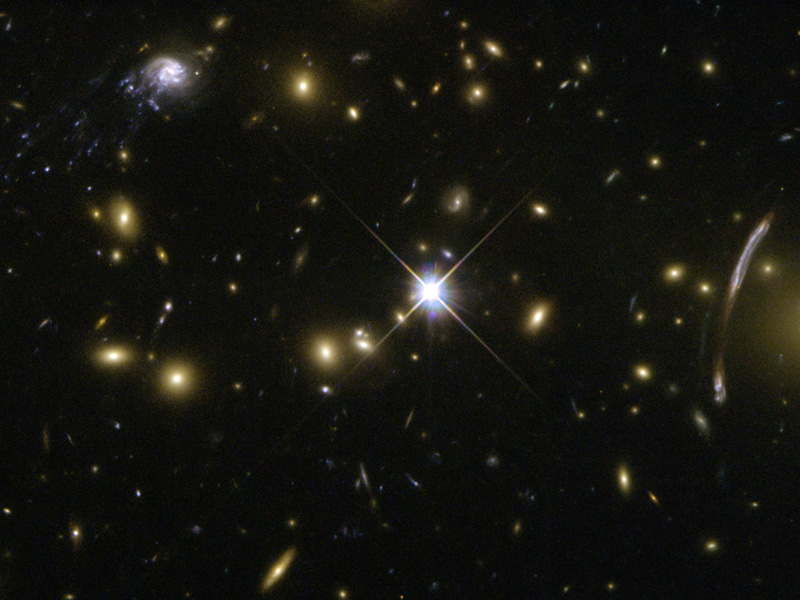Explanation: What's happening to the galaxies of cluster Abell 2667? On the upper left, a galaxy appears to be breaking up into small pieces, while on the far right, another galaxy appears to be stretched like taffy. To start, most of the yellowish objects in the above image from the Hubble Space Telescope are galactic members of a massive cluster of galaxies known as Abell 2667. The distortion of the galaxy on the upper left is real. As the galaxy plows through the intercluster medium, gas is stripped out and condenses to form bright new knots of stars. This detailed image of ram pressure stripping helps astronomers understand why so many galaxies today have so little gas. The distortion of the galaxy on the far right, however, is an illusion. This nearly normal galaxy is actually far behind the massive galaxy cluster. Light from this galaxy is gravitationally lensed by Abell 2667, appearing much like a distant person would appear through a wine glass. Each distorted galaxy gives important clues about how galaxies and clusters of galaxies evolve.
1999 2000 2001 2002 2003 2004 2005 2006 2007 2008 2009 2010 2011 2012 2013 2014 2015 2016 2017 2018 2019 2020 2021 2022 2023 2024 2025 |
Yanvar' Fevral' Mart Aprel' Mai Iyun' Iyul' Avgust Sentyabr' Oktyabr' Noyabr' Dekabr' |
NASA Web Site Statements, Warnings, and Disclaimers
NASA Official: Jay Norris. Specific rights apply.
A service of: LHEA at NASA / GSFC
& Michigan Tech. U.
|
Publikacii s klyuchevymi slovami:
gravitational lens - cluster of galaxies - Skoplenie galaktik - gravitacionnaya linza
Publikacii so slovami: gravitational lens - cluster of galaxies - Skoplenie galaktik - gravitacionnaya linza | |
Sm. takzhe:
Vse publikacii na tu zhe temu >> | |
